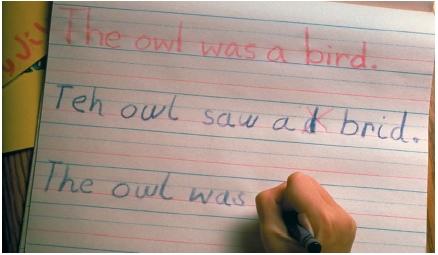Dyslexia
Dyslexia is a learning disorder characterized by difficulty reading and writing. Dyslexia is not caused by poverty, psychological problems, lack of education, or laziness. People who are identified as dyslexic generally have normal or above-normal intelligence, normal eyesight, and tend to come from average families. It is not unusual for a student with dyslexia to fail English while earning straight As in science.
There are dozens of symptoms associated with the disorder. Dyslexic people may skip words, reverse the order of letters in a word (writing or reading "was" for "saw"), or drop some letters from a word (reading "run" instead of "running"). They may invent strange spellings for common words, have difficulty remembering and following sequences (like reciting the alphabet in order), and have cramped, illegible handwriting.

Causes of dyslexia
Scientists generally agree that dyslexia results from a neurological problem in the areas of the brain involved in reading. Several regions of the brain—all located in the brain's left side—have been identified as controlling the complicated task of reading and writing. What part of the reading task is processed in each area is not yet clear. Even more mysterious is how the brain translates abstract symbols like printed letters into ideas.
In normal reading, the eye sends pictures of abstract symbols to the brain. Each symbol is then transferred along different routes to various portions of the brain for interpretation. Scientists suspect that in a dyslexic person, something jams the transfer of that information.
Scientists generally agree that genetics plays a role in dyslexia. Studies of twins show that if one twin is dyslexic, the other is likely to have the disorder. Other studies show that the disorder, which affects about 8 percent of the population, tends to run in families. It is common for a child with dyslexia to have a parent or other close relative with the disorder. Because 90 percent of dyslexic people are male, scientists are investigating the relationship of male hormones to the disorder.
Treating dyslexia
Those with mild cases of dyslexia sometimes learn to compensate on their own. Many reach remarkable levels of achievement. Italian artist, scientist, and engineer Leonardo da Vinci (1452–1519) is thought to have been dyslexic. It is also believed that German-born American physicist Albert Einstein (1879–1955) was dyslexic.
Early diagnosis and prompt treatment seem to be the keys to over-coming the challenges of dyslexia. Linguistic (language) and reading specialists can help those with the disorder learn how to develop and apply reading and writing skills.